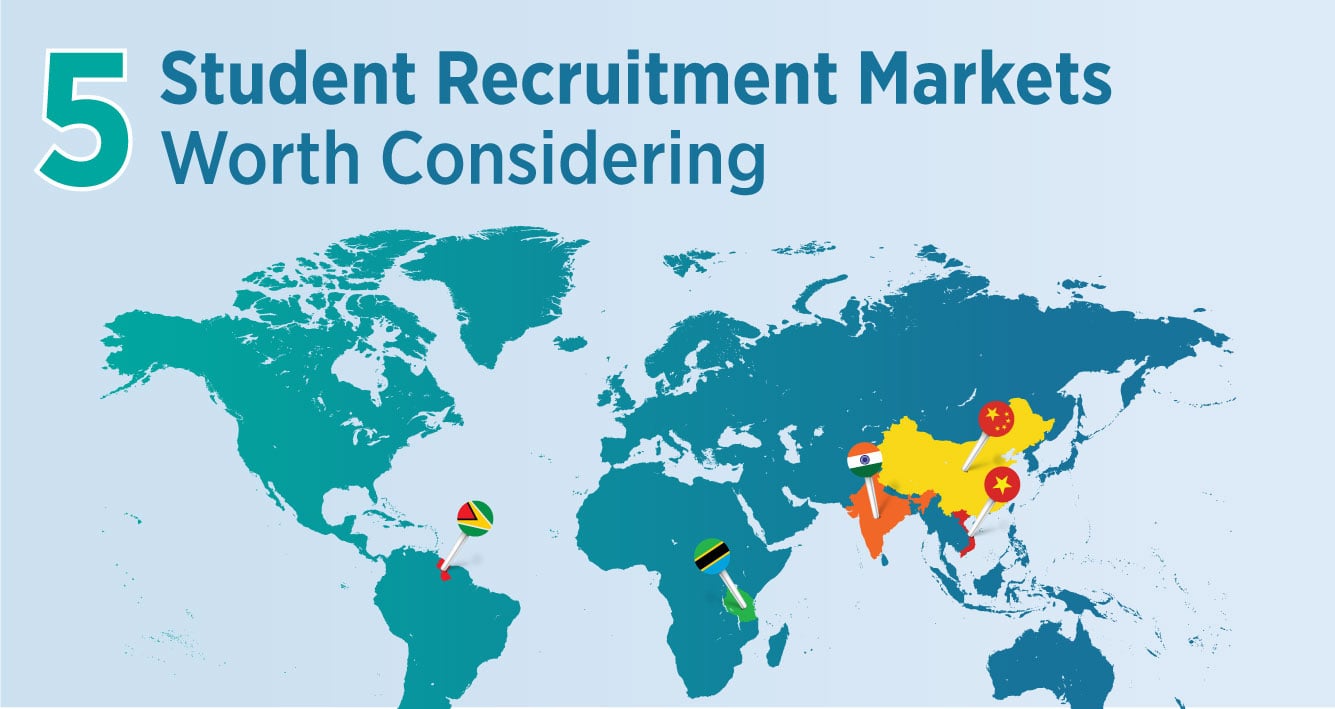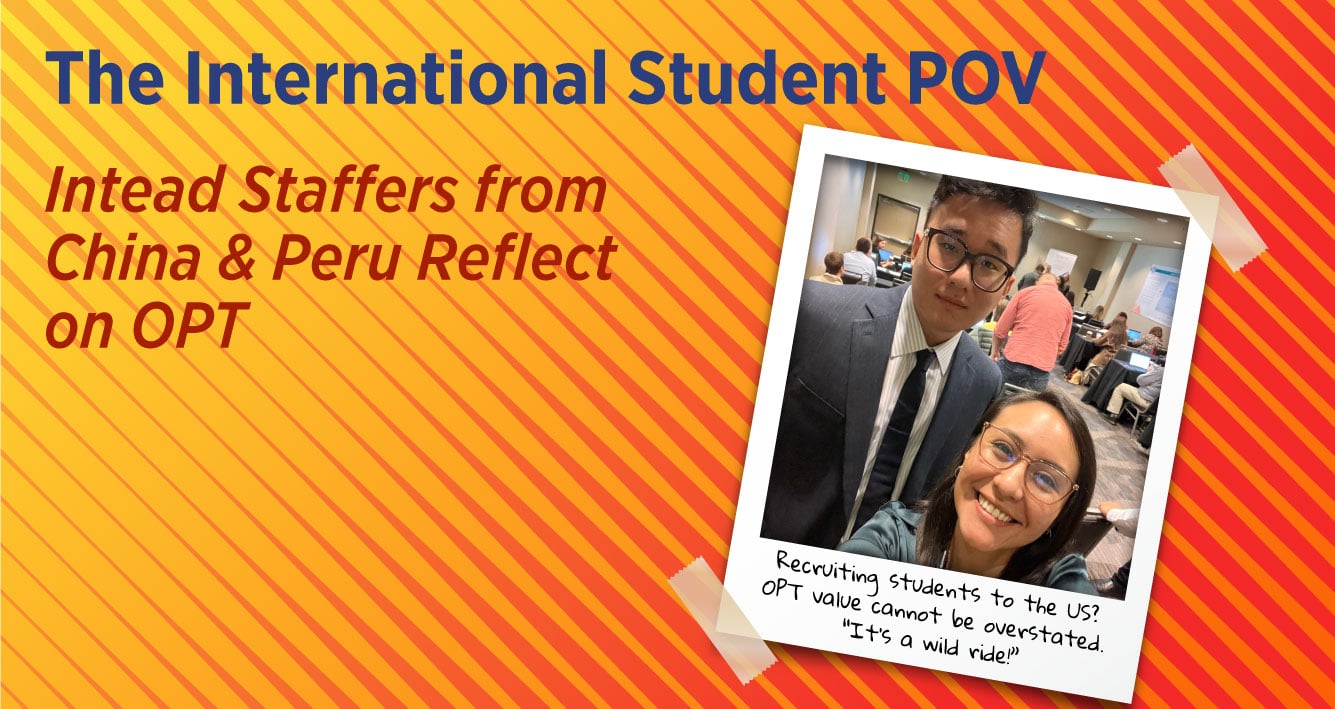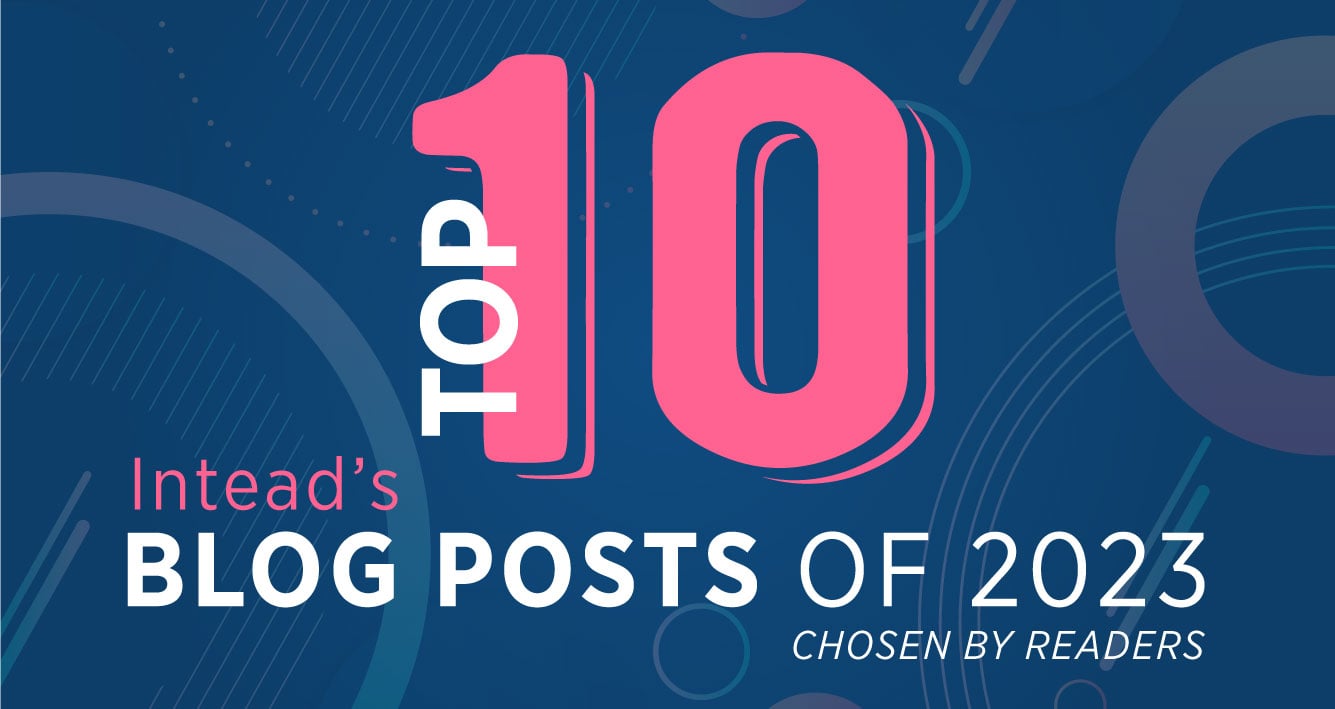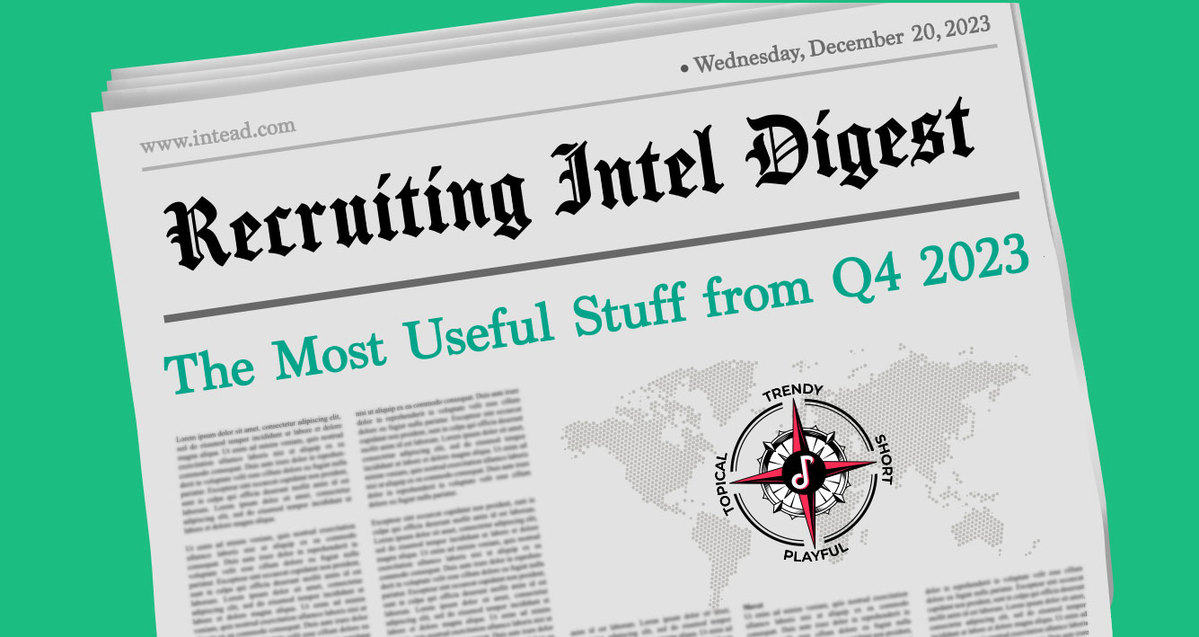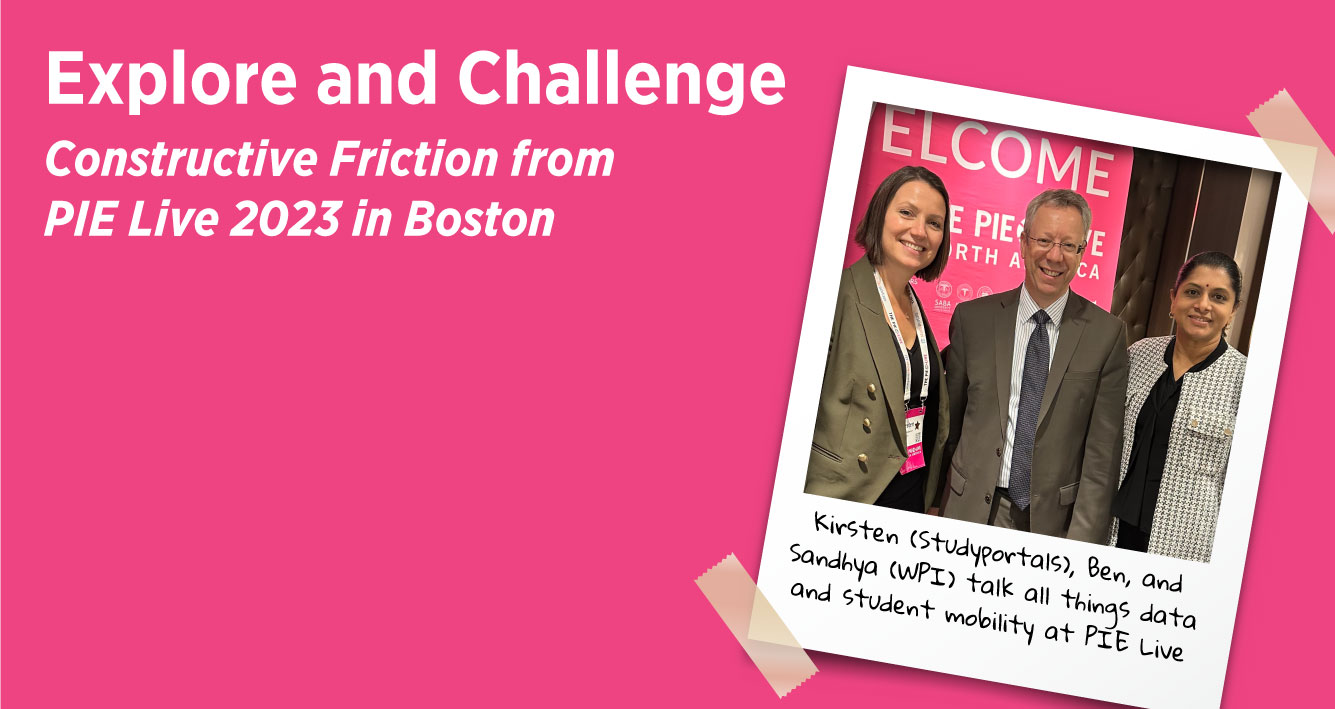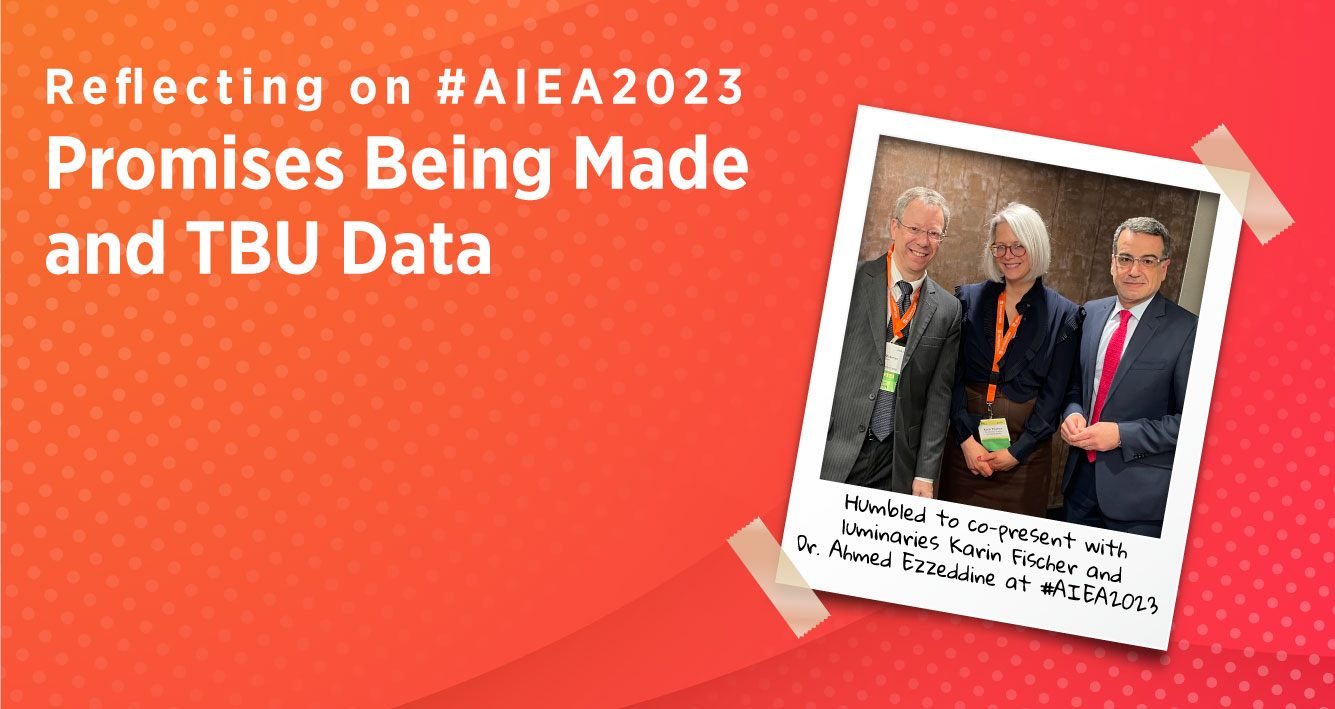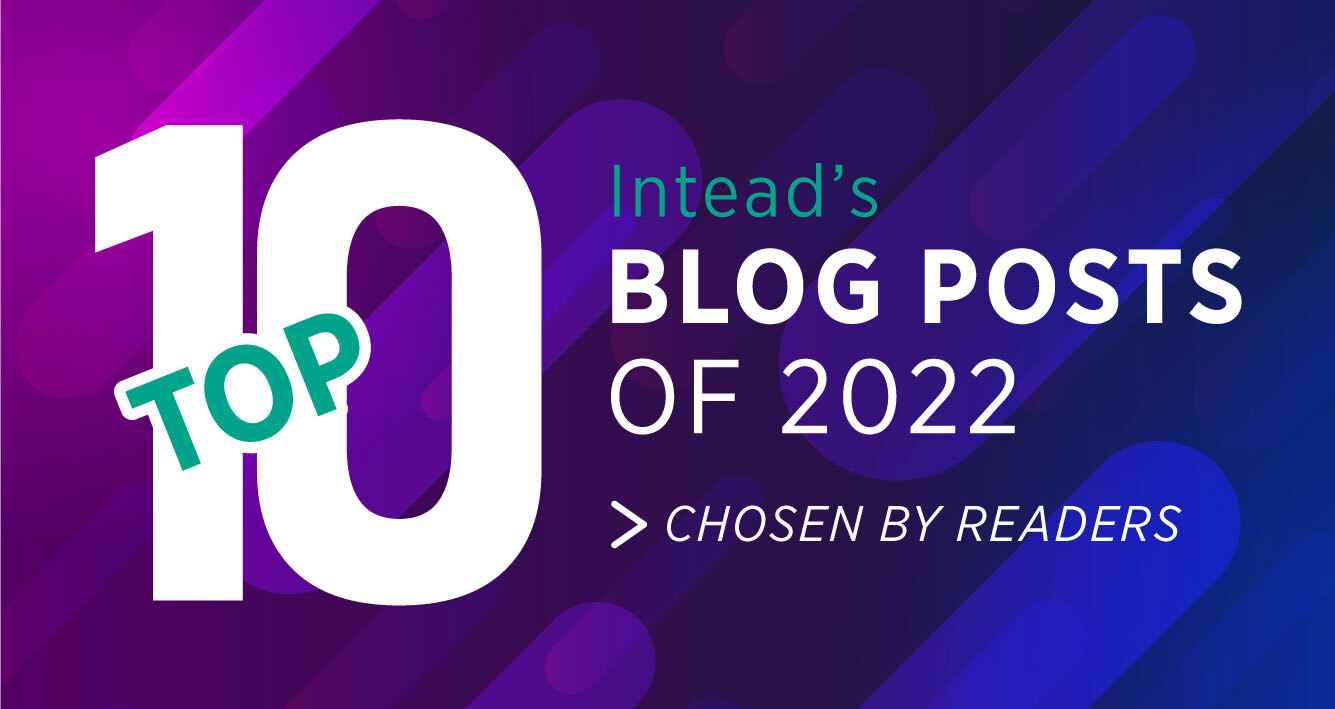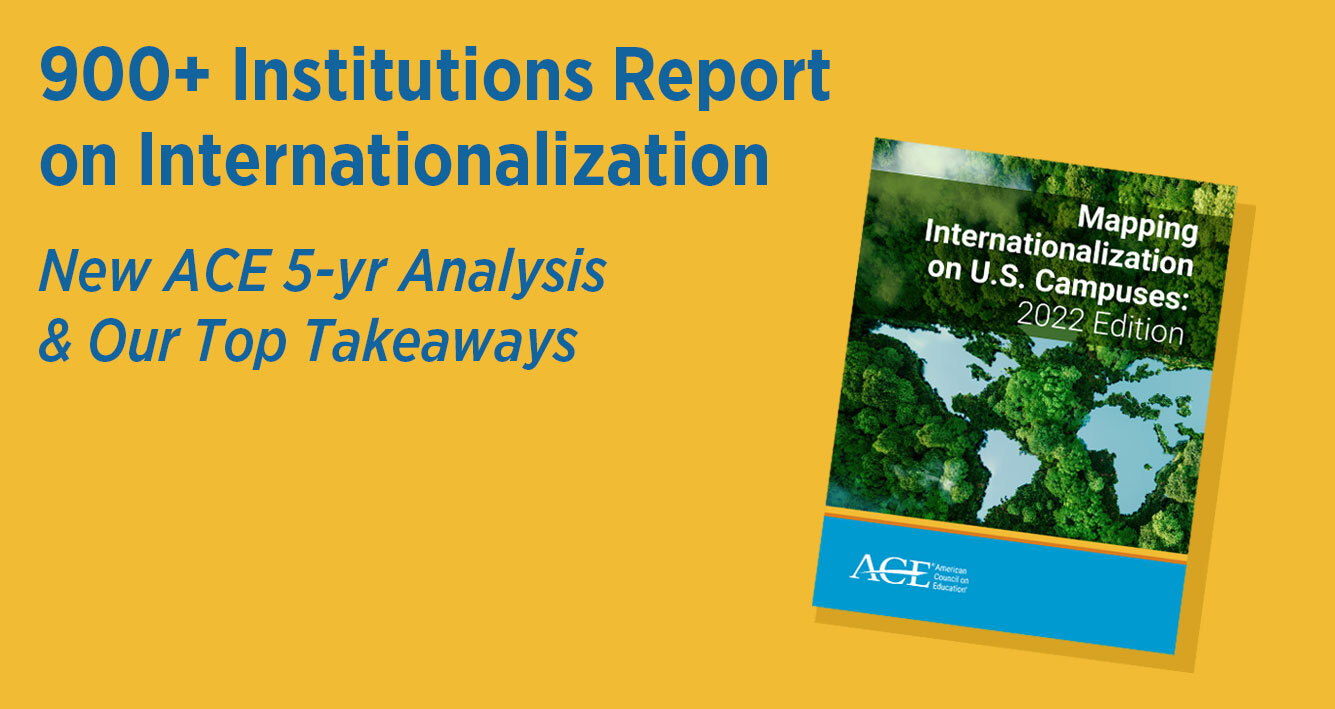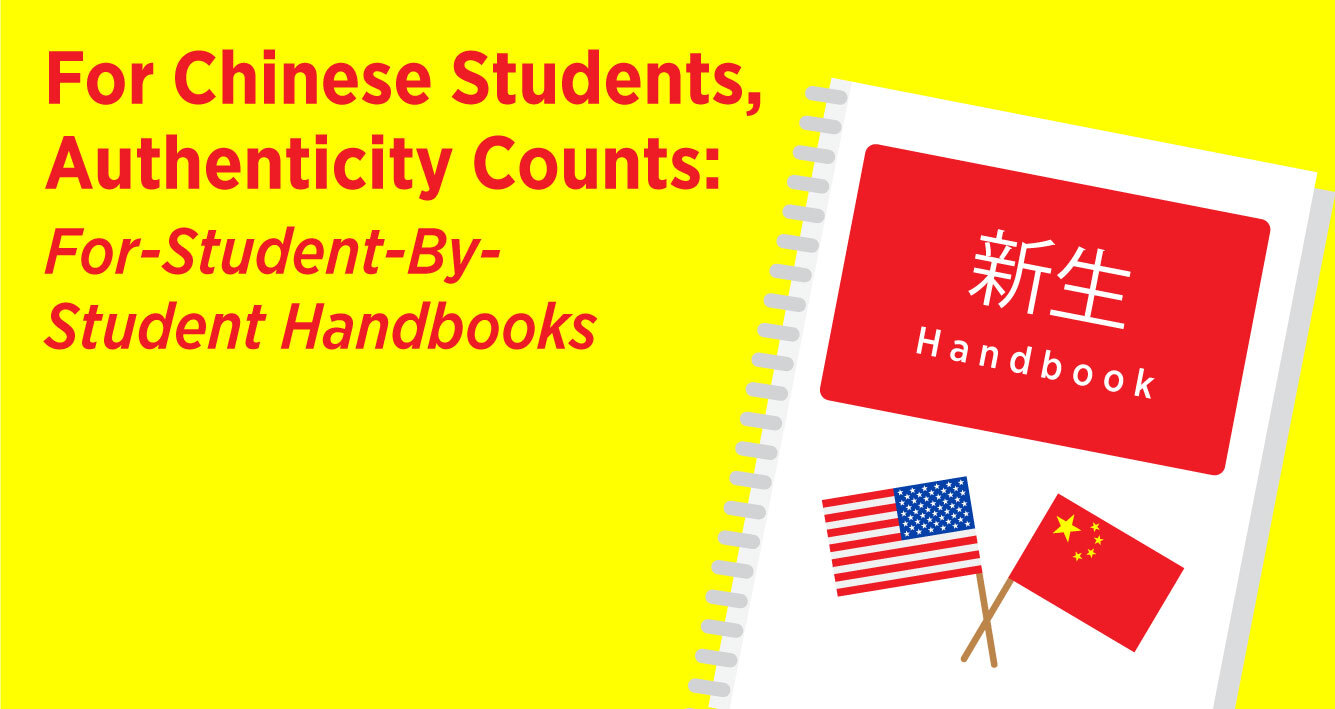Tianyu Shen is a business analyst from China. Isabel Aucca is a digital campaign manager from Peru. These two members of the Intead team, both on STEM OPT programs through Northeastern University and Hult International Business School respectively, have amazing stories as international students, travelers, explorers, and knowledge workers here in the US.
Many of you already know Tianyu and Isabel through the conferences they attend for Intead and the work they do with our network. If you haven’t had that pleasure, be sure to introduce yourself to them at an upcoming industry conference (AIEA, NAFSA, AIRC, ICEF, etc.) These two super talents bring their skills to our work in their respective fields (market research, business and data analytics, digital campaigns development and optimization, and competitor analyses) along with incredibly valuable international perspectives.
Their comments below will quickly give you a sense of what it is like to be in their shoes and understand a bit more about what drives them. And since so many of you work to create fulfilling experiences for international students, we thought we’d use this platform to share words that will surely resonate with you and your team.
Opportunities to Meet In Person
The Intead team is gearing up for some amazing presentations and we hope you can join us.
- AIRC Spring Symposium in Niagara, Canada, April 30, 2024
- ICEF North America in Niagara, Canada, May 1-3, 202
- NAFSA 2024 Annual Conference and Expo in New Orleans, May 28-31, 2024
Let us know if you’ll share a cup of coffee and a conversation about all things global and digital (info@intead.com)
As you read the perspective below, consider what it is that drove their decisions to study and work outside of their home countries. Note the courageous decisions they made and the personality traits that are likely common to many of the international students you are seeking. It is these kinds of personal reflections that inform larger marketing strategies and help us create truly engaging content to attract future international students to our institutions.
Tianyu, who grew up in China, attended an English language institute in Boston before earning his undergrad degree from the University of Nebraska-Lincoln and then his master’s at Northeastern University. As excellent as this background is, it does not provide andy indication of the genuinely joyful, energetic, and thoughtful person he is.
What he has to say about where he is now: “It’s human nature. When you receive something and people support you, you want to give back. For me, I feel so grateful for all of the education I received. It’s life-changing. And I’m grateful for all the people who helped me out along the way. Now, working at Intead I can help others who are standing where I once stood. I’m so thankful.”
The feeling is absolutely mutual.
Isabel, an undeniable dynamo from Peru who speaks three languages (Spanish, Portuguese, and English), earned her undergrad from the Universidad del Pacifico in Lima and her master’s from Hult International Business School in Massachusetts.
“Arriving at a place like Intead, it’s the purpose they have, it’s the type of company where you can be hands-on in every project – all of varying client scopes – and so many different ways to engage with the work. On one project I wear a digital hat, another I’m focused on research, and on others I get to be really creative about the overall marketing plan. That sets personalities like me up for success."
Isabel absolutely does her part to set us (and that means you) up for success, as well.
Following our recent #AIRC2023 full-day digital marketing workshop in December, both Isabel and Tianyu independently posted to LinkedIn about their experience helping others learn their craft during the workshop. This post brings their reflections to you.
Read on…
Read More

